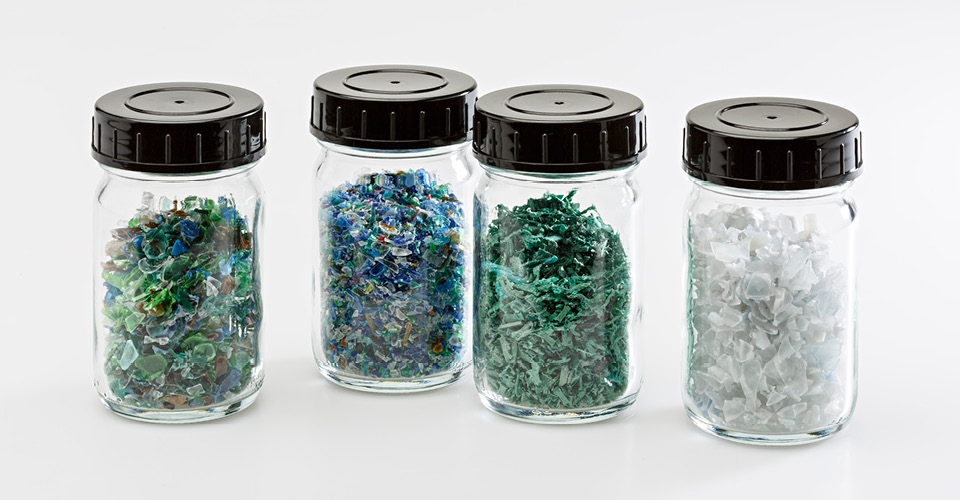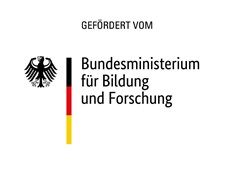Influence of recyclate grades and formulation on material properties


A few years ago, the project partners EASICOMP and Fraunhofer LBF already developed a new LFT material based on used PET beverage bottles in the previous project "UpcyclePET". This exhibited mechanical properties similar to those of virgin plastics such as short glass fiber reinforced polyester or polyamides (PA-SGF). A demonstrator component made from it was also characterized by low shrinkage and particularly high dimensional stability. Compared to PA66-SGF25, the rPET-LGF25 also exhibited a significantly improved CO2 footprint.[1] Encouraged by these results, the aim of the now completed "UpcyclePETPlus" project was to develop secondary raw material sources for which high-quality recycling is not yet possible today.
As new post-consumer raw material sources for the LFT materials, the PET tray fraction from the yellow bag and streams from commercial and commercial-like waste streams should be developed in particular. The streams investigated in "UpcyclePETPlus" are significantly more heterogeneous than the PET streams from the bottle cycle. This concerns the variety of possible compositions (e.g. foreign polymers, non-plastic components, additives, adhesives, etc.) and aging states as well as their range of variation (e.g. batch-to-batch).
In order to identify the appropriate additivation strategy for the respective material stream, it is first necessary to know the composition of the input material stream as precisely as possible. Selected methods used in the project are described below as examples.
Initially, non-plastic impurities such as aluminum residues and titanium dioxide were identified as critical impurities, as they would negatively affect both the impregnation of the long fiber, the processing behavior and the resulting mechanical properties. Polymeric impurities such as polyvinyl chloride, whose decomposition product hydrogen chloride induces hydrolytic degradation of PET during processing, and polyolefins (mainly LDPE and LLDPE), which are incompatible with PET, were also identified using methods such as elemental analysis, DSC, and high-temperature1 H-NMR spectroscopy. In addition, it was possible to quantify statements about comonomers in the PET material streams, which, together with a - compared to bottle PET - lower molar mass distribution, have an influence on the crystallization behavior. In addition to the impregnation quality of the glass fiber by the polymer melt, a possible fast crystallization during the injection molding process is particularly important. Both properties are decisively influenced by changes in the composition of the respective stock stream used.
Model compounds were created to better evaluate the interaction of input material flows from the fluctuating sources, the selected additivation and the resulting material properties. These differed in the type and amount of PET used, the proportion of bottle or virgin PET. They were specifically blended with different but known foreign polymers such as LDPE, LLDPE or PP and added accordingly with a view to the new target application. This allowed valuable conclusions to be drawn about the type and content of suitable additives (such as compatibilizers, impact modifiers, process and heat stabilizers, nucleating agents) for different material streams and the formulation to be optimized.
Ultimately, it was possible to develop LFTs based on different secondary material streams that are characterized by comparable properties to the LFT based on bottle PET developed in the previous project. In comparison with LFT based on bottle PET, which according to an orienting life cycle assessment by the Öko-Institut is associated with 5.1 CO2 equivalents/kg, the CO2 footprint could also be significantly reduced once again to 3.8 - 4.4 CO equivalents/kg.
[1] F. Schönberger, S. Khare, T. Harmia, Sustainable Components from PET Flakes, Kunststoffe international 7/2021, 57 - 60.
Dr. Tapio Harmia, Managing Director EASICOMP GmbH

KMU-innovativ: Resource efficiency and climate protection
Funding code: 033RK081C
Project partner: EASICOMP GmbH